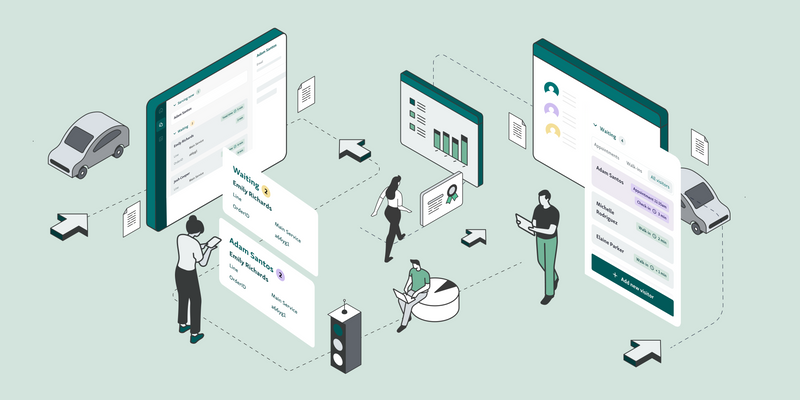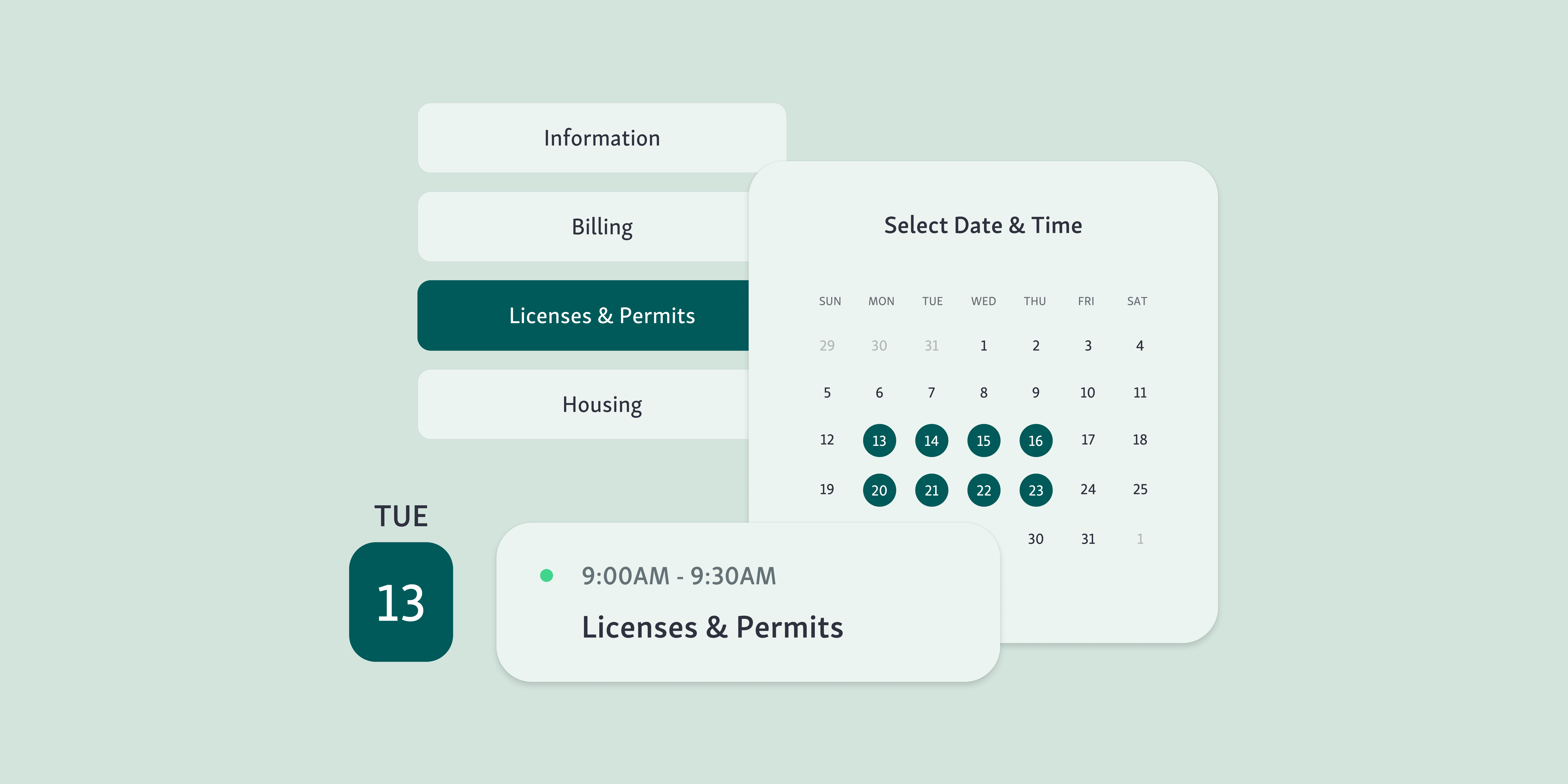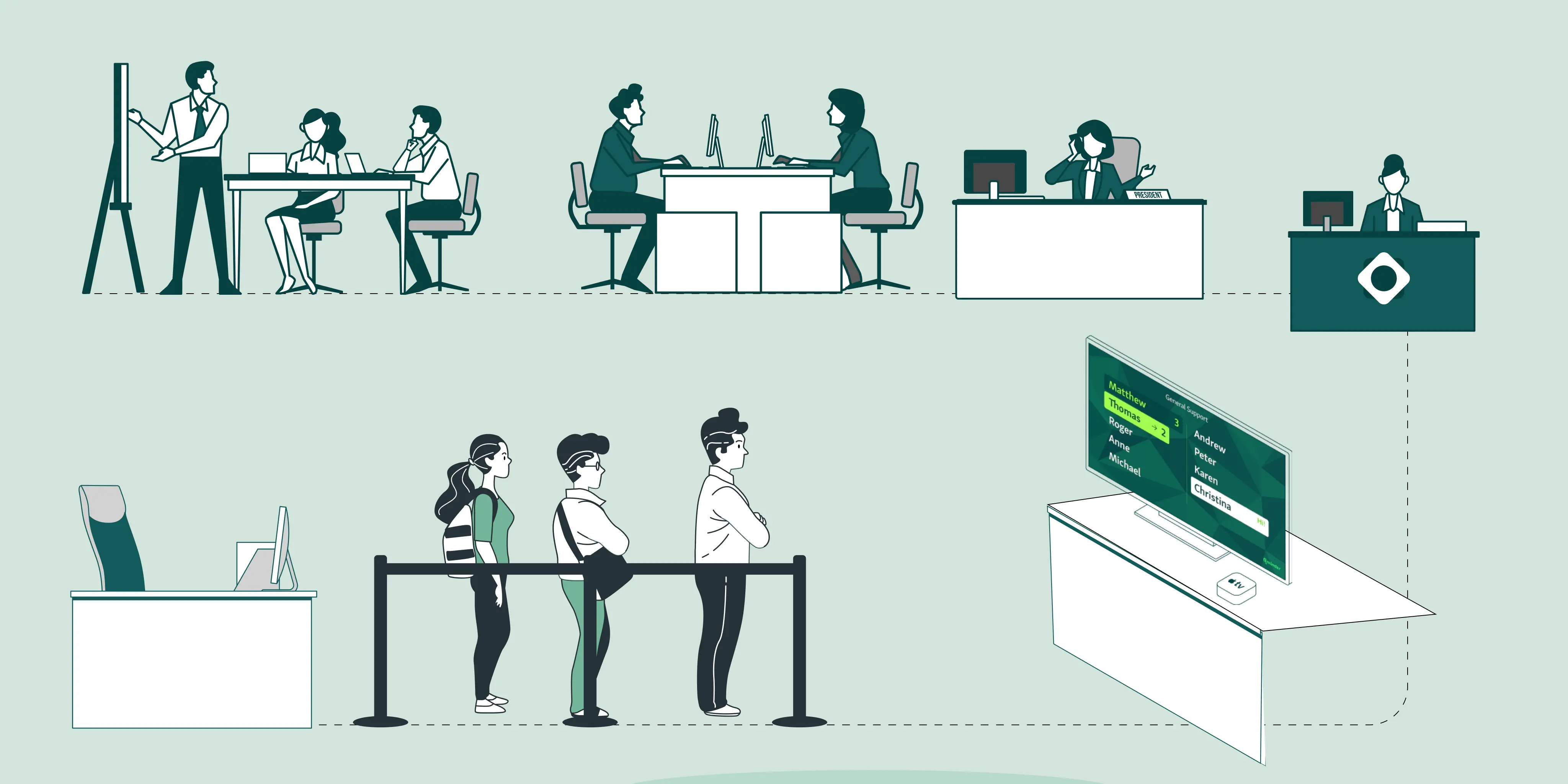Public offices play a crucial role in serving communities, with services ranging from healthcare to government assistance.
However, as the demand for these services continues to rise, managing appointments for high-volume services has become a significant challenge. The need for efficiency, accessibility, and customer satisfaction has never been more urgent.
Public offices often struggle with long wait times, manual scheduling errors, and overwhelmed staff. Automated appointment scheduling systems offer a solution by streamlining the booking process, reducing human error, and improving overall service delivery.
These systems help public offices handle large volumes of appointments effectively, ensuring that citizens receive timely and efficient service while improving their experience.
In this blog, we’ll explore the importance of automated scheduling and how it can enhance public service operations.
Challenges of High-Volume Services in Public Offices?
Public offices often face overwhelming demand for services, especially when serving large communities. Here's a closer look at the key challenges faced by these offices:
1. Overwhelming Appointment Demand
As the number of people requiring public services increases, appointment systems often struggle to keep up. Public offices, particularly those in sectors like healthcare, social services, and public safety, are seeing an influx of citizens, leading to overwhelmed staff and scheduling errors.
Appointment systems fail to scale with increasing demand.
Manual processes often lead to scheduling errors.
Overloaded systems make it difficult to handle the volume of requests.
Missed appointments and rescheduling errors become more common.
For example, many public offices still use paper-based or basic digital systems that can’t handle the large volume of requests efficiently, resulting in missed appointments and delayed services.
2. Increased Wait Times
One of the most significant challenges with high appointment volumes is the long wait times citizens often face. Extended waits lead to frustration and dissatisfaction, potentially causing people to miss their appointments altogether. Not only does this affect citizen experience, but it also burdens office staff who have to manage the fallout, including rescheduling and handling complaints.
Longer wait times can cause dissatisfaction and frustration.
Missed appointments increase due to long wait periods.
Citizens may feel neglected or underappreciated.
Increased workload on staff due to rescheduling and managing complaints.
The ripple effect of long waits can significantly decrease operational efficiency and the overall perception of the service.
You might also like - 4 Ideas to Reduce Customer Service Wait Times
3. Resource Management Strain
Public offices typically operate with limited resources—staff, time, and space. The growing demand for services puts a strain on these resources, making it harder to meet expectations. Manual appointment systems often fail to optimize the allocation of available resources, meaning staff are not always deployed efficiently, and some areas may be overbooked while others remain underutilized.
Limited staff availability makes managing high volumes difficult.
Without proper scheduling, resources like staff time and spaces are underused.
Lack of real-time data can lead to inefficient service allocation.
Staff burnout becomes a risk due to inefficient workload distribution.
For instance, a social services office may see a surge in requests on specific days, but a lack of scheduling tools leaves gaps in staff utilization and wasted time.
The Benefits of Automated Appointment Scheduling in Public Offices
Automated appointment scheduling systems offer numerous advantages to public offices, particularly those handling high volumes of appointments. Here’s a closer look at the key benefits of automation in public service appointments:
1. Efficiency and Time-Saving
Automation drastically reduces the time spent on manual tasks like booking, rescheduling, and canceling appointments. This streamlining of administrative work leads to increased operational efficiency, freeing up staff time to focus on more critical tasks.

No need for staff to handle every scheduling task manually.
Time saved on rescheduling and cancellations is redirected toward more important tasks.
Faster booking process for citizens, reducing wait times and stress.
For a local government office that handles appointments for public services like licensing and permits, automation cuts down on the time staff spends manually booking and rescheduling appointments. Citizens can access the system online, book their appointments, and reschedule with ease—freeing staff to address more complex queries or services.
2. Reduction in No-Shows and Cancellations
Automated reminders via SMS, email, or app notifications play a significant role in reducing no-shows and last-minute cancellations. Studies have shown that automated reminders can drastically improve appointment adherence, leading to a more predictable workflow and reduced strain on public services.
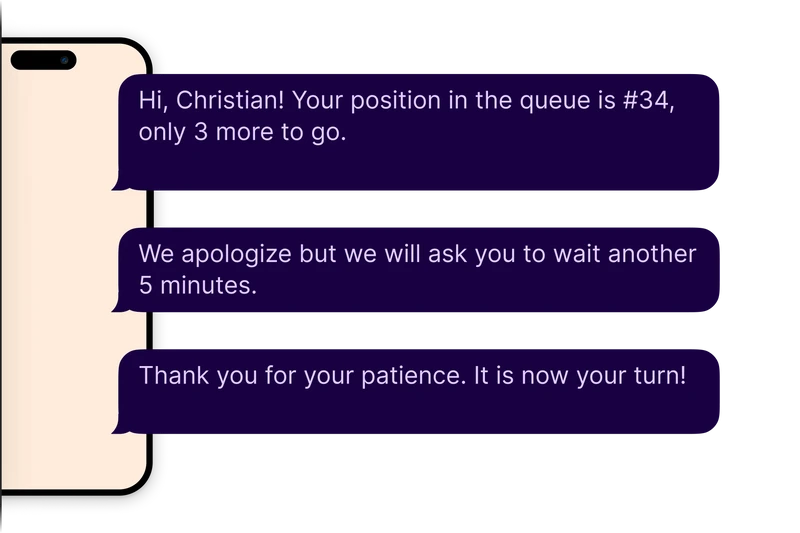
Automated reminders reduce no-shows and late cancellations.
Studies show that reminders can reduce missed appointments by over 30%.
Citizens are more likely to attend appointments when they receive timely reminders.
A public health department uses automated reminders to notify patients about their upcoming medical checkups. This has drastically reduced the number of missed appointments, improving the clinic’s ability to serve more patients on time and decreasing wasted resources.
Helpful read - 9 Best Strategies to Reduce No-Shows
3. Improved Customer Experience
Automated appointment systems offer a smoother, user-friendly booking process for citizens. This makes it easier for them to schedule, reschedule, or cancel appointments, significantly enhancing their overall experience, particularly in government services where the process can sometimes be complex or frustrating.
Citizens can book or reschedule appointments online, at their convenience.
User-friendly interfaces make it simple for citizens to navigate the process.
Reduces the need for long waiting times on phone calls or in person.
A DMV that implements automated scheduling lets citizens easily book their license renewal appointments online, saving them from the hassle of waiting in long lines. The streamlined process reduces wait times and improves overall customer satisfaction, especially for individuals who previously had to spend hours in person.
4. Optimized Resource Allocation
Automation helps better manage office space, staff time, and other resources by tracking real-time data about appointments and visitor traffic. Public offices can make adjustments to their scheduling to ensure resources are used optimally, reducing bottlenecks and improving overall service delivery.
Better tracking of peak times allows for more efficient scheduling.
Resource allocation is automated based on available staff and office space.
Reduces under-utilization of staff and spaces, maximizing efficiency.
In a large municipal office, automated appointment scheduling systems track visitor numbers and optimize the number of staff required for each department at specific times. By analyzing trends and adjusting schedules, the office can avoid overstaffing during quiet hours while ensuring adequate coverage during peak times.
5. Data-Driven Insights for Continuous Improvement
Automated systems collect valuable data that can be used to improve workflows, service delivery, and overall operational performance. By analyzing patterns such as peak appointment times or frequently requested services, public offices can fine-tune their processes for continuous improvement.
Data insights help identify areas for operational improvement.
Reports can highlight inefficiencies or bottlenecks in the system.
Automated systems allow for ongoing service improvements based on real-time data.
A government office managing permits tracks appointment scheduling data, identifying peak periods and types of services that cause delays. This data helps streamline processes, allocate resources more effectively, and reduce service backlogs, ultimately improving service delivery for all citizens.
Key Features of Automated Appointment Scheduling Systems for Public Offices
Automated appointment scheduling systems offer essential tools to manage high volumes of appointments in public offices. The right appointment system can significantly reduce administrative burdens, ensure better time management, and create a smoother experience for all involved.
1. Self-Service Appointment Booking
Self-service portals are vital for public offices, as they allow citizens to book, reschedule, or cancel appointments at their convenience, without relying on office staff. This feature reduces the administrative workload while enabling citizens to have more control over their schedules.

By offering an intuitive online interface, public offices can give citizens the flexibility to book appointments from home, saving them time and reducing foot traffic in the office.
Benefits of Self-Service Appointment Booking:
Reduces administrative workload for staff
Increases citizen satisfaction with the added convenience
Provides accessibility for individuals with busy schedules
2. Multi-Channel Support
Offering multiple channels for appointment booking is crucial to ensure that all citizens can access the system. While some may prefer using online platforms, others may be more comfortable with phone calls, emails, or even in-person kiosks.
By providing a variety of communication options, public offices can ensure that every citizen, regardless of their technical ability, can book their appointments through their preferred method.
Benefits of Multi-Channel Support:
Enhances accessibility for all citizens
Provides flexibility in appointment scheduling
Ensures broader engagement by meeting different user preferences
3. Real-Time Availability and Scheduling
Real-time scheduling ensures that appointment slots are updated instantly, preventing double-bookings and conflicts. Public offices handling high appointment volumes can greatly benefit from this feature.
By updating available time slots in real-time, citizens can quickly secure an appointment without the risk of overbooking or waiting for confirmation.
Benefits of Real-Time Availability and Scheduling:
Prevents double-bookings and scheduling conflicts
Improves efficiency by providing immediate updates
Offers citizens the confidence to book available slots instantly
4. Automated Reminders and Notifications
Automated reminders and notifications play a key role in ensuring that citizens don’t forget their appointments. By sending reminders through SMS, email, or app notifications, public offices can reduce no-shows and last-minute cancellations.
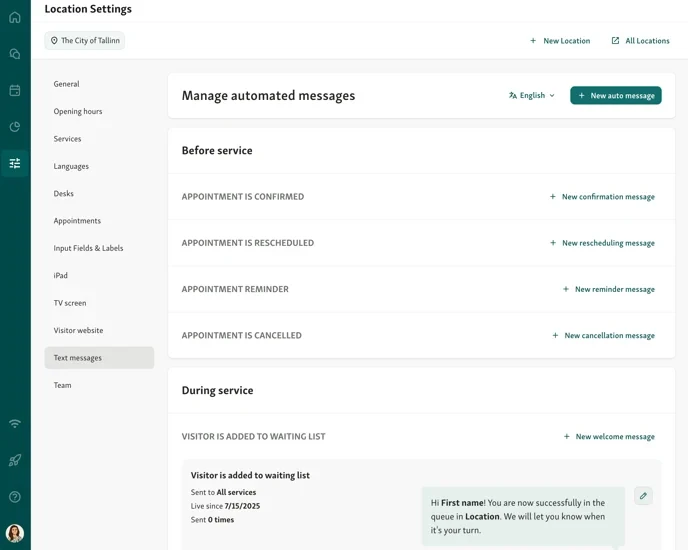
This not only helps maintain a smooth workflow but also frees up staff time that would otherwise be spent manually reminding citizens.
Benefits of Automated Reminders and Notifications:
Significantly reduces no-shows
Helps minimize last-minute cancellations
Saves staff time by automating the reminder process
5. Integration with Existing Systems
For maximum efficiency, appointment systems should integrate with other public office platforms like CRM systems, calendar applications, and other service tools. This integration ensures a seamless flow of information across different systems, reducing manual entry and potential data errors.
The system should automatically update appointment details across all platforms, making it easier for staff to manage appointments and maintain accurate records.
Benefits of System Integration:
Streamlines information across departments
Reduces data entry errors and improves accuracy
Increases efficiency by connecting multiple systems seamlessly
6. Regulatory Compliance
Public offices must follow strict data privacy laws such as GDPR, HIPAA, and CCPA. Automated appointment systems like Qminder support compliance by securely storing personal data, tracking consent, and using safeguards like encryption and data anonymization. This minimizes the risk of breaches and reduces the need for manual oversight.
With Qminder’s GDPR-compliant infrastructure, public offices can maintain high standards of data protection while simplifying their compliance efforts.
Benefits of Regulatory Compliance through Qminder:
Ensures secure handling of personal data
Simplifies compliance with regulations like GDPR and HIPAA
Reduces manual processes and audit-related stress
7. Tracking and Reporting
Automated appointment systems offer built-in tracking and reporting tools that bring greater transparency and accountability to public office operations. Every appointment, cancellation, and interaction is logged, making it easy to generate real-time reports for audits, internal reviews, or regulatory inspections.

By eliminating manual tracking and data entry, these systems ensure accuracy while giving public offices the insights they need to improve service delivery.
Benefits of Automated Tracking and Reporting:
Provides detailed logs of all appointment activity
Simplifies audit preparation and compliance reporting
Enhances data accuracy and operational transparency
Also read - 8 Queue Management System Features Your Business Needs
Real-Life Success Stories
Discover how real organizations have improved their service efficiency, reduced wait times, and created smoother experiences for their visitors.
1. How Berkeley Rec Sports Manages Passport Office Lines With Ease
Berkeley Rec Sports, part of UC Berkeley, isn’t just a hub for fitness — it’s also an official U.S. passport acceptance facility. With extended hours and high visitor volume, managing foot traffic has become a challenge.
The Problem: Long Waits, Limited Staff
Before Qminder, the scene was typical of most document offices:
Wait times up to three hours during peak seasons
Visitors standing around with no clear sense of when they'd be served
Only three customer service agents handling six different service lines
Frequent family group visits, each applying for multiple passports
Peak months (March–May) pushed the team to the limit
The Solution: Digital Queuing With Qminder
To streamline the process, Berkeley Rec Sports introduced Qminder. Upon arrival, visitors check in via iPad and are assigned to the appropriate queue. A display screen shows live updates, so people can relax instead of standing in line. The result: less crowding, shorter perceived wait times, and smoother operations for staff.
The Result: Efficiency and Peace of Mind
Qminder helped transform the visitor experience, especially during peak seasons. Families feel more in control of their time, and staff can focus on service instead of crowd control. It's a clear win for both sides.
Crowds in the lobby are gone
Visitors enjoy a clear, predictable wait experience
Staff work more efficiently, focusing on service rather than managing people
Complaints dropped, even during the busiest times
2. Okaloosa County Clerk of Court: Improving Public Service Through Smarter Queuing
Okaloosa County Clerk of Court, located in Florida, serves a wide range of court-related needs, from traffic tickets to marriage licenses and passport applications. With locations handling hundreds of visitors daily, managing foot traffic and service requests became a challenge.
The Problem: Managing Diverse Visitor Needs
Before Qminder, the Okaloosa County Clerk of Court faced common issues typical in high-traffic public service centers:
A large number of visitors with varying needs
Long, unpredictable wait times at both the Okaloosa Courthouse Annex (200+ visitors) and the Crestview location (80+ visitors)
Inefficient, chaotic queues leading to frustrated visitors
Limited staff handling multiple types of services
Remote services during COVID-19 lockdown presented additional logistical challenges
The Solution: Streamlined Service with Qminder
By implementing Qminder, the Clerk's office created an efficient and clear system. Visitors check in using iPads, allowing them to be assigned to the appropriate queue based on their specific needs. Real-time updates on a TV display show when it's their turn, reducing crowding and anxiety.
The Result: Efficient, Personalized, and Smoother Service
Qminder’s solution has significantly improved the waiting experience at the Okaloosa County Clerk of Court. Both visitors and staff benefit from a smoother, more organized process:
Reduced wait times and increased visitor satisfaction
Clear, predictable wait experiences for families and individuals
Staff now focus more on providing service than managing chaos
Positive feedback on social media reflects improved customer perception
Enhancing Public Office Efficiency with Automated Appointment Scheduling
Automated appointment scheduling is revolutionary for public offices managing high volumes of appointments.
By reducing administrative burden, improving accessibility, and providing better resource management, these systems ensure that public services are both efficient and citizen-friendly.
Automated systems like the ones discussed here can also help public offices comply with regulations, reduce no-shows, and enhance customer satisfaction.
Implementing a system that fits your needs—whether it's Qminder or another tool—can provide long-term benefits for both citizens and office staff.
Take the next step towards efficiency with Qminder. Start your free trial today and see how Qminder can transform your public office’s appointment scheduling!
Qminder is one of the best tools for managing queues in public offices. It offers features like remote sign-ins, real-time updates, and queue segmentation to streamline visitor flow and reduce wait times, while ensuring data security and privacy compliance.
Staff should receive thorough training on the system’s features, workflows, and troubleshooting steps. It’s also beneficial to offer continuous support and updates as the system evolves, ensuring the team is always proficient in its usage.
Challenges include resistance to change, ensuring the system integrates well with existing infrastructure, and training staff. Additionally, public offices must address accessibility issues for citizens who may not be familiar with digital systems.

